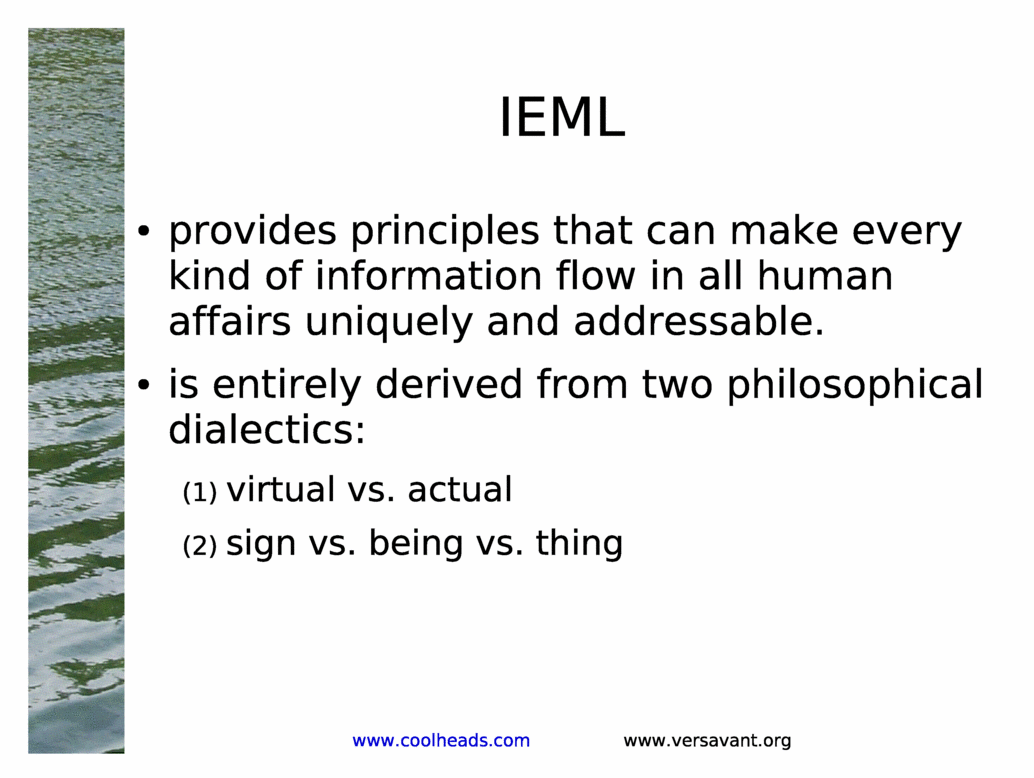
| Previous | SLIDE 15 | Next |
 | ||
As I understand it, the dialectic tension between being that is "virtual" and being that is "actual" is the tension between what is possible but not (yet) actualized, and what is already actualized. They are two distinct kinds of being.
As I understand it, the tripolar dialectic between "sign", "being", and "thing", consists of three distinct kinds of being. The first kind, "sign", is the kind of being that things such as words, highway signs, or any other kind of human expression may have: the kind of being that is the signification of something. The second kind, "being", is the kind of being that human beings (for example) exhibit; such beings are able to discern what signs signify; they interpret. The third kind of being, "thing", is the kind of being that is neither signification nor interpreter.
In IEML, the 5 primitives have a natural order of "increasing substantiality": (1) virtual, (2) actual, (3) sign, (4) being, (5) thing. This order provides them with unique, natural numeric values. Those values, in turn, allow the creation of a natural address space for all subjects in the human frame of reference -- a space in which semantic distance can conceivably be calculated (in various ways, TBD), in which every possible subject has exactly one address, and "to which nothing human is alien" (to paraphrase Montaigne). A very remarkable achievement, if it works.